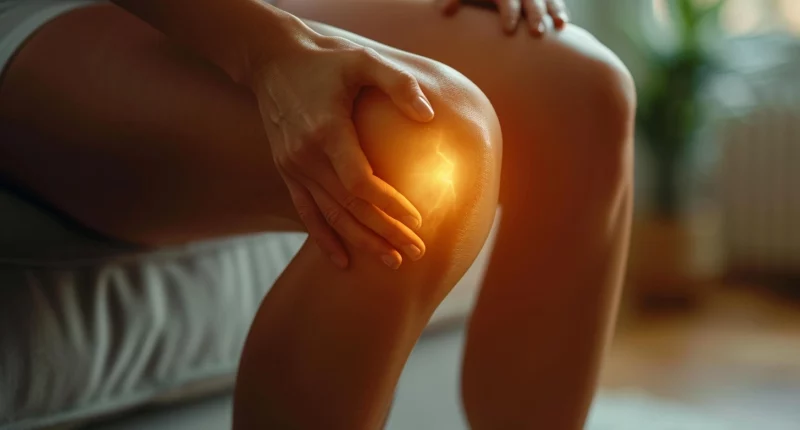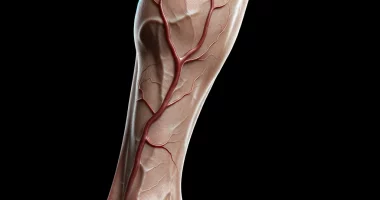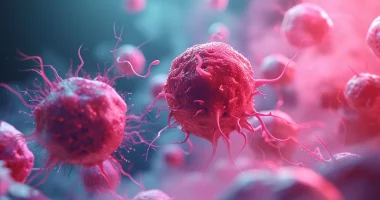Knee injury
What’s that?
Injuries to the knee joint can range in severity from a minor contusion to a rupture of the intra-articular structures. Both soft tissue and bony structures can be injured.
About the disease
The knee joint belongs to the category of large articulations. It has a complex structure, performs various functions that are aimed at maintaining statics and ensuring human mobility in space. However, despite this important physiology, the knee has a poorly developed protective apparatus, which increases the risk of relatively easy trauma.
Some of the most common injuries are meniscus injuries. Ligament tears and intra-articular fractures are less common. However, at first it is difficult to differentiate between these conditions, as they have similar symptoms – painful sensations, swelling, motor limitations. Knee injuries are accompanied by hemarthrosis – violation of the integrity of intra-articular vessels and hemorrhage into the joint cavity.
Various types of knee joint injuries require a careful differentiated approach to both diagnosis and treatment, especially when it comes to intra-articular injuries, when there is a high probability of complications leading to impaired joint function.
Given the potential heterogeneity of knee injuries, it is important for the doctor to establish an accurate diagnosis at the initial examination stage, as it will determine the nature of subsequent treatment. Diagnosis of traumatic injuries is based on a comprehensive imaging examination of the knee joint – X-ray and ultrasound scans, magnetic resonance or computed tomography are performed. The nature of the treatment program is associated with the type of injury sustained. In some cases, surgical intervention is required, while in others, conservative therapy may be sufficient.
Types of knee injuries
The main types of knee injuries are considered to be:
- Knee contusion is a soft tissue injury in which the integrity of the skin is preserved (pathological changes unfold at the micro level);
- Ligamentous compartment injury – ligaments can be injured along their entire length (complete tear) or in a limited section (partial tear);
- Rupture of tendon bundles, which are the dense connective tissue into which the muscle continues;
- Meniscal injuries – injuries to the cartilage layer of the knee;
- Intra-articular and periarticular fractures with disruption of the integrity of one or two bones;
- Knee dislocation – the bone below is considered dislocated.
Traumatic conditions can be closed and open. The difference between the two is the preservation of the skin.
Symptoms of knee injury
The symptoms of knee injuries are directly related to the type of mechanical injury.
- In contusion, pathological changes are not limited to the skin and the underlying fatty layer. These injuries are often accompanied by damage to intra-articular structures (hemarthrosis and inflammation of the synovial membrane may develop). Contusion is manifested by moderately pronounced pain, the joint is swollen, the folds are smoothed. A bruise is determined on the skin. The function of the knee is disturbed – there is lameness, and in severe cases a person cannot fully step on the leg and bend it at the knee.
- Ligament tears of the knee joint are accompanied by pain and swelling. The pathognomonic symptom is a “click”. The joint loses stability, the knee cannot provide reliable support for the body. Painfulness increases with palpation.
- When the quadriceps femoris is injured, the injured person cannot rest on the injured leg, it feels as if it is tucked. This symptom is combined with pain and bruising of the soft tissues.
- In the case of dislocations, the knee takes on an atypical shape. The person is bothered by intense pain.
Consequences of knee injuries
Traumatic injuries lead to impaired microcirculation, which is a trigger factor for subsequent pathologic changes. The main adverse effects of knee joint injuries can be:
- joint contracture;
- muscle atrophy;
- osteoarthritis (degenerative-dystrophic lesion of the cartilage layer of the knee joint);
- instability in the joint;
- Chronic knee pain syndrome associated with a long-standing injury.
Causes of knee injuries
The causes of knee injuries are related to direct or indirect mechanical impact. They can occur when falling on the joint or due to a blow with a heavy object. Knee ligaments are injured when the tibia is tilted either to the outside or to the inside. The ligaments and menisci can be damaged by excessive extension of the knee joint.
Knee injuries can occur in the home, in sports, at work, or as a result of a motor vehicle accident.
Diagnosis of knee joint injuries
Diagnosis of knee joint injuries is carried out in stages. Radiologic methods of examination are used to evaluate the capsule-ligamentous compartment. The diagnostic search begins with radiography. This method allows you to assess the state of bone tissue, but does not provide information about soft tissue structures. To solve the task, ultrasound scanning is shown. In complex diagnostic cases, magnetic resonance imaging is used, which helps to study in detail the condition of tendons, ligaments, menisci, joint capsule.
If intra-articular damage is suspected, diagnostic arthroscopy is performed. Thin endoscopic instruments with an attached camera are inserted into the joint cavity. The magnified image is displayed on a screen. If necessary, minimally invasive therapeutic manipulations can be performed.
Treatment of knee injury
The nature of the treatment program is determined by the specifics of the injury. In case of contusions, partial ligamentous and meniscus tears, conservative management is usually indicated. In case of intra-articular fractures, complete meniscus and ligament tears, arthroscopic surgery is performed.
Conservative treatment
Conservative treatment of knee joint injury is indicated for mild injuries. The main directions of this approach are:
- Creating functional rest of the affected limb – in some cases, short-term bed rest is sufficient, and in other cases, a plaster cast is required for 2-4 weeks;
- early initiation of physical treatments that help improve microcirculation and metabolism in tissues;
- the use of non-steroidal anti-inflammatory drugs that control pain and reduce the severity of the inflammatory response.
Surgical treatment
If there is hemarthrosis or reactive inflammation of the synovial membrane, a therapeutic puncture of the joint is indicated. This manipulation allows evacuation of pathologic fluid, rinsing of the joint and targeted treatment with antiseptics or anti-inflammatory agents.
In the case of a complete meniscus tear, menisci are usually stitched together. Preserving the menisci during surgery reduces the increased risk of degenerative process (arthrosis) and improves the functionality of the joint in the short and long term.
In case of complete tears of the ligamentous or tendon compartment, the ends are sutured. Temporary immobilization of the lower limb is required for regeneration of the connective tissue.
All these treatment options are available in more than 900 hospitals worldwide (https://doctor.global/results/diseases/knee-injury). For example, arthroscopic chondroplasty can be performed in 43 clinics across Germany for an approximate price of $13.2 K (https://doctor.global/results/europe/germany/all-cities/all-specializations/procedures/arthroscopic-chondroplasty).
Prevention of knee injuries
The prevention of knee injuries is aimed at preventing injuries. Precautions should be observed during icy conditions, when performing high-rise work and driving a car. Athletes are recommended to use special knee braces.
Rehabilitation for knee joint injury
Medical rehabilitation for a knee injury has several goals:
- structural restoration;
- controlling inflammation;
- improving the functionality of the leg.
Physiotherapy, physical therapy, physical therapy and massage are indicated as part of the rehabilitation treatment. At the final stage, taping may be performed. Comprehensive rehabilitation helps to prevent the risk of recurrent synovial inflammation, improve joint stability and reduce the risk of muscle-tendon contracture.




